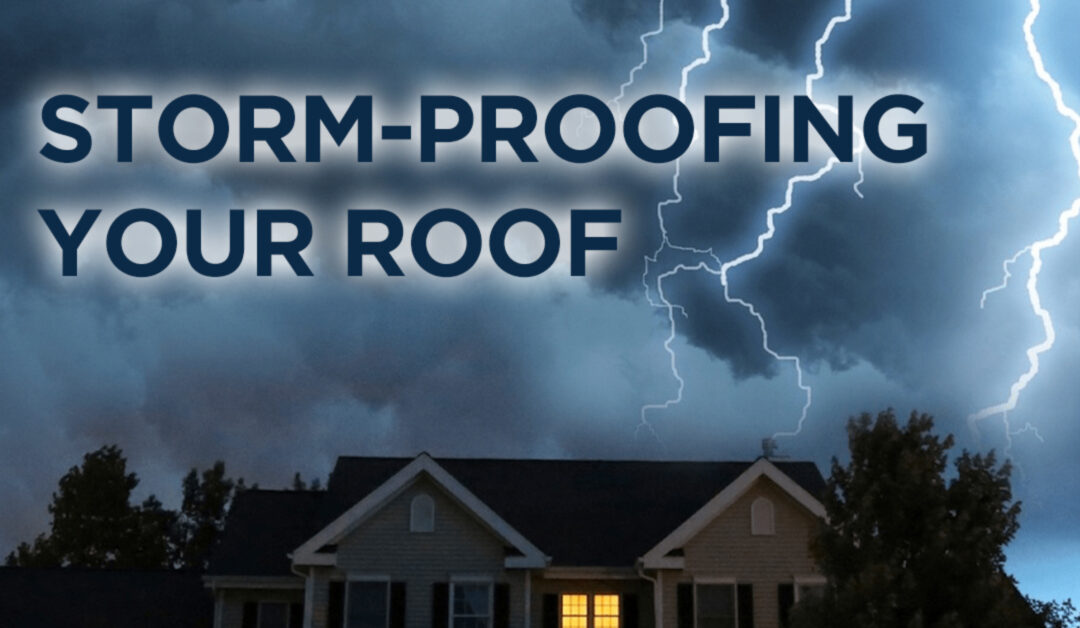Severe weather events such as hurricanes, tornadoes, and heavy storms can wreak havoc on your home, with the roof particularly vulnerable to damage. Storm-proofing your roof is essential for safeguarding your home and ensuring its structural integrity during extreme weather conditions. In this blog post, we’ll explore essential steps you can take to protect your roof and your home against severe weather.
Start with a Solid Foundation:
A sturdy roof begins with a solid foundation. Ensure that your roof deck and underlying structure are in good condition and capable of withstanding the forces of nature. Address any structural weaknesses or damage before severe weather strikes.
Invest in High-Quality Roofing Materials:
Choosing the right roofing materials is critical for storm-proofing your roof. Opt for high-quality, impact-resistant materials designed to withstand strong winds, hail, and flying debris. Depending on your location and climate, consider options such as asphalt shingles, metal roofing, or clay tiles.
Ensure Proper Installation:
Even the best roofing materials can fail if not installed correctly. Hire a reputable roofing contractor with experience installing roofs to local building codes and manufacturer specifications. Proper installation is essential for maximizing the performance and durability of your roof.
Reinforce Vulnerable Areas:
Identify vulnerable areas of your roof, such as eaves, gables, and ridges, and reinforce them to withstand high winds and pressure. Install hurricane straps or clips to secure the roof deck to the framing and prevent uplift during storms.
Trim Overhanging Branches:
Overhanging tree branches can pose a significant risk to your roof during storms. Trim back branches that hang over your roof to prevent them from breaking off and causing damage. Additionally, remove dead or weak trees near your home that could fall onto your roof during a storm.
Maintain Gutters and Downspouts:
Clogged gutters and downspouts can lead to water backup and roof leaks during heavy rainfall. To prevent water damage to your roof and property, keep gutters clear of debris and ensure downspouts are directed away from your home’s foundation.
Install Impact-Resistant Skylights and Vents:
Skylights and roof vents are potential weak points in your roof’s defense against severe weather. Install impact-resistant skylights and vents to minimize the risk of breakage and water infiltration during storms.
Secure Loose Items:
Before a storm, secure loose items such as patio furniture, garden tools, and outdoor equipment to prevent them from becoming projectiles that can damage your roof and home.
Conduct Regular Inspections:
Schedule regular inspections of your roof to check for signs of damage or wear and address any issues promptly. Look for loose or missing shingles, damaged flashing, and signs of water infiltration that could compromise your roof’s integrity.
Have a Plan in Place:
Finally, plan for what to do in the event of severe weather. Know where to seek shelter in your home and have emergency supplies and contact information readily available. Stay informed about weather forecasts and heed any evacuation orders or warnings issued by local authorities.
Storm-proofing your roof is essential for protecting your home and family against the destructive forces of severe weather. By following these important steps and taking proactive measures to reinforce your roof’s defenses, you can minimize the risk of damage and ensure your home remains safe and secure during even the most extreme weather events. Remember, investing in storm-proofing today can save you from costly repairs and headaches in the future.

